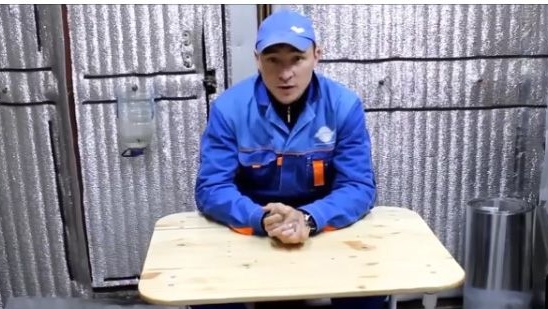
Hello the inhabitants of our site. In this article, I would like to describe and show the assembly of the folding table as much as possible. This homemade product will use all the usual household tools and materials that could be lying around in your home. the garage after repair of a house, apartment or the garage itself. The table that we assemble will be quite compact and comfortable.
Homemade products of this type are far from new. Furniture transformers were popular in the last century. And the masters, who emphasized such developments, sometimes brought them to incredible functionality. Homemade, presented today, is simple and at the same time very practical. This is a work table for small jobs with electrics, plumbing, etc. It is compact, lightweight, and takes up very little space. And transferring it from object to object will not be any difficulty at all. How to make it? Let's find out.
To make a homemade transformer table you will need:
Devices and materials:
1- Inexpensive furniture board (grade 1-2);
2- PVC pipe, diameter - 1 inch or 25 mm;
3- PVC fittings (for pipe size): angle 90 ° for fastening the mixer and internal thread - 4 pieces, a simple clip - 16 pieces, plugs for soldering - 8 pieces, a sleeve with an external thread and transition to the pipe - 4 pieces;
4- Iron carrying handle;
5- A piece of furniture thin-walled pipe, diameter - 25 mm;
6- Bolts, nuts, washers, self-tapping screws;
7- Varnish or paint, brush.
8- Plumbing soldering iron or “iron”;
9- Drill or screwdriver;
10- Electric fretsaw;
11- Sandpaper or thin section machine;
12- Drills, cross head;
13- Tape measure, pencil, ruler, plate or compass for marking the radius of curvature of the countertop.
You can purchase a plumbing soldering iron by clicking on this.
Making a homemade transformer table:
1- To begin with, you should decide on the choice and selection of the countertop itself. For the canvas of the countertop, the author chose a pine furniture panel. Plywood, OSB or chipboard are also suitable. Everyone can determine the size according to the purpose of his activity.
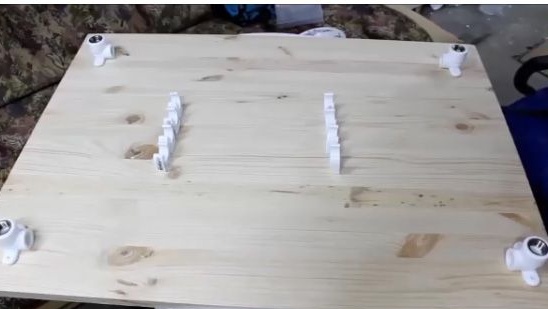
2- From the beginning we should mark all the places for fastening all the elements of the table.
3- It is worth paying attention to the placement of the legs under the table, the length of which is usually not less than 70-75 cm. They should not protrude from behind the countertop, which means that its length must exceed this size. We mark the countertops, starting with the placement of fixing PVC corners with thread. We distribute them at the four corners of the canvas, taking into account that they will be rounded.The author chose bolts as hardware for fasteners.
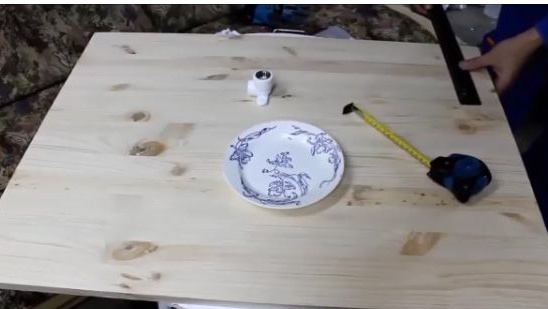
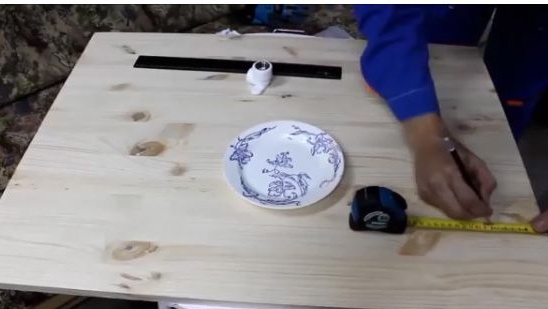
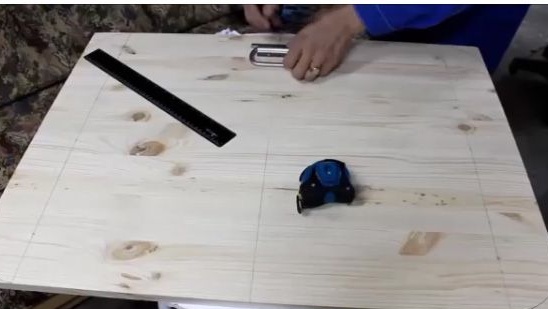
4- After which, under the tabletop itself, place the clips for attaching the legs. There should be four on each side. The interval between them can be minimal, and the distance from both exposure lines should be less than the length of the legs.
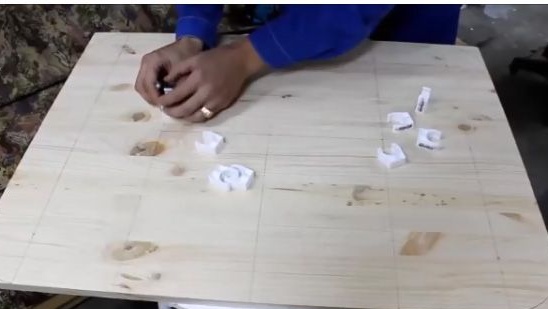
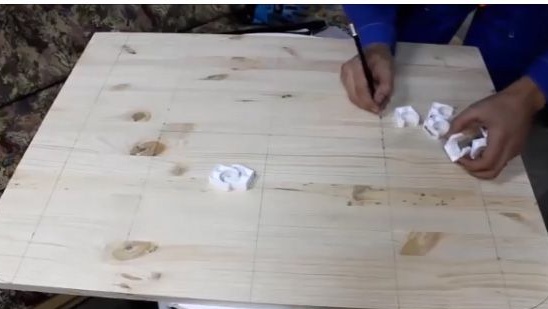
5- The edges of the countertops can be rounded with a jigsaw. You can use a plate or compass to mark the radius. To process sawn edges will help sandpaper or thin section machine. We drill all marked holes with a drill or a screwdriver.
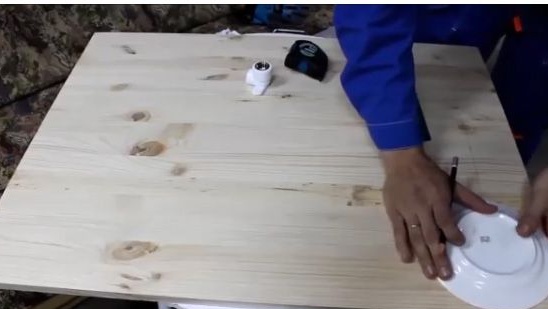
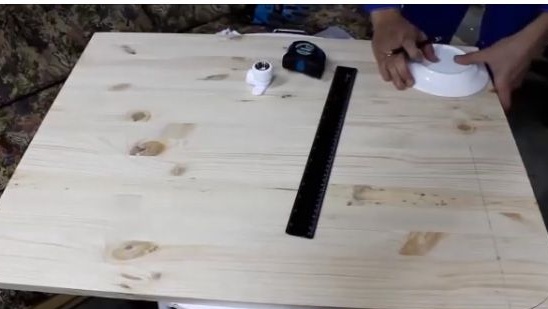
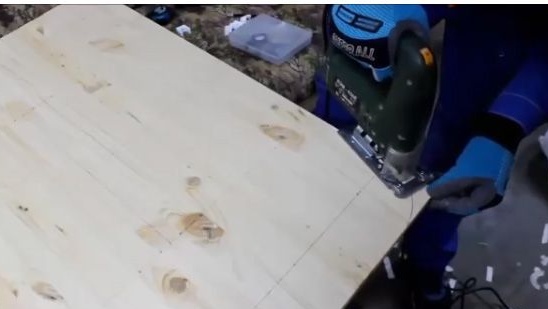
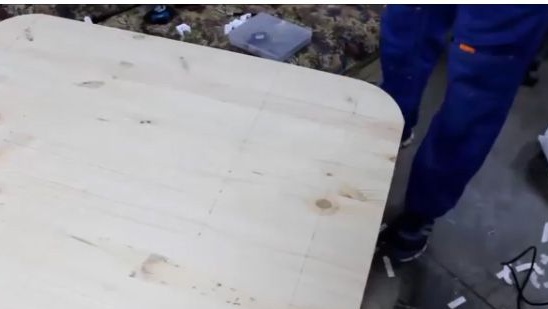
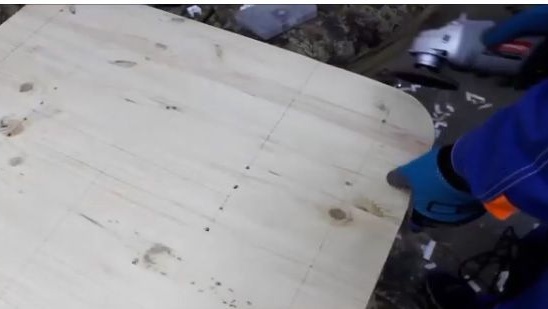
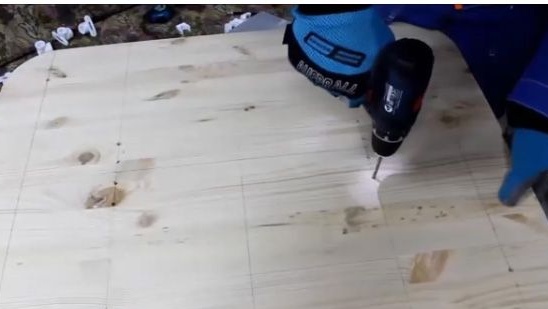
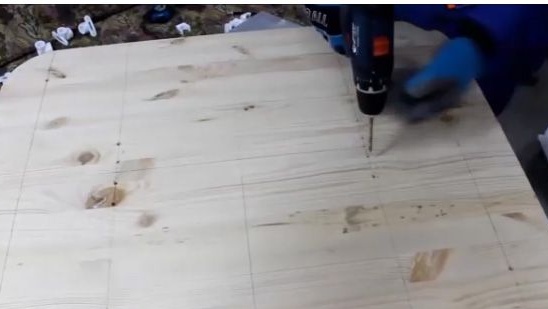
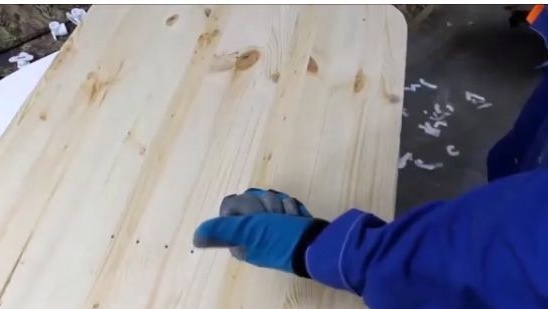
6- Only after we have marked and cut out all the necessary holes should we think about protecting the countertops. Surely everyone knows that wood is not a very durable material, primarily due to external influences on it. We will cover the countertop with varnish, namely yacht varnish. It should be covered on both sides and in two layers.
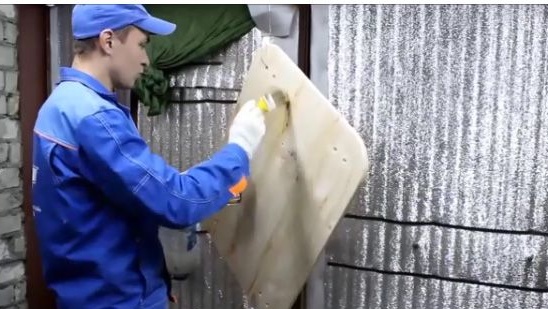
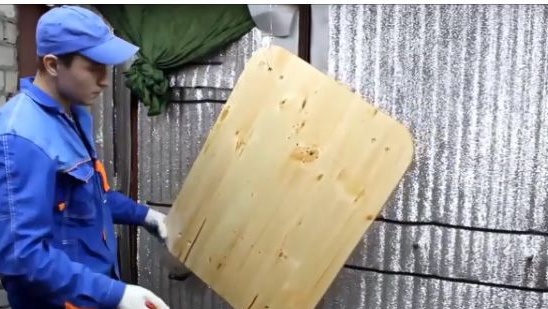
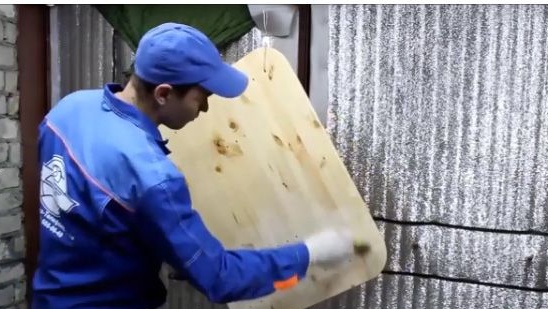
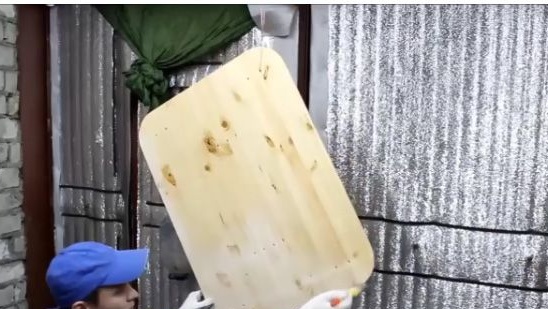
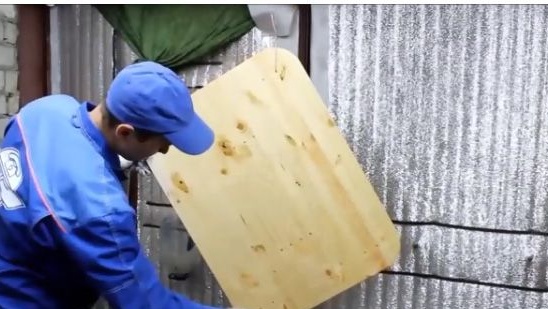
7- For legs, the author chose a PVC pipe with a diameter of 25 mm. Its height must be calculated so that the sleeve and the plug fit in it. It is better to cut such a pipe with plumbing scissors, but a hacksaw for metal is also suitable. For stiffness, you can insert metal furniture, suitable in size, inside the PVC pipe.
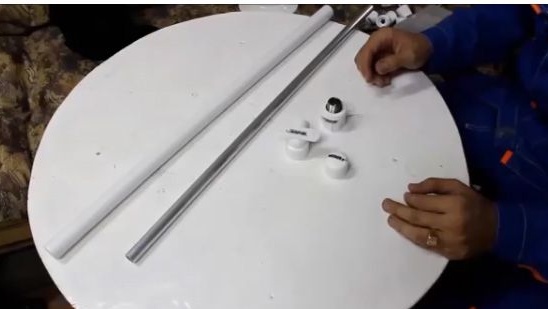
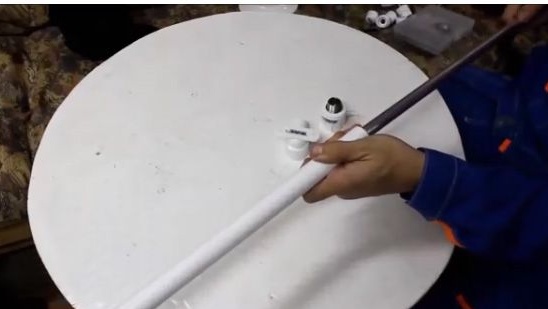
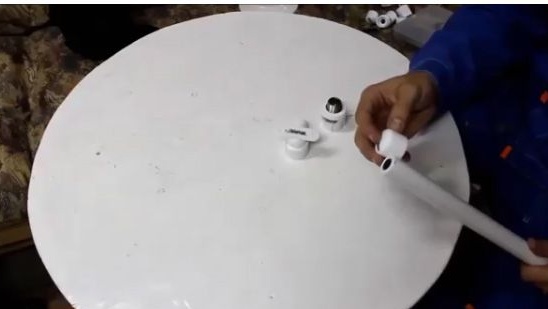
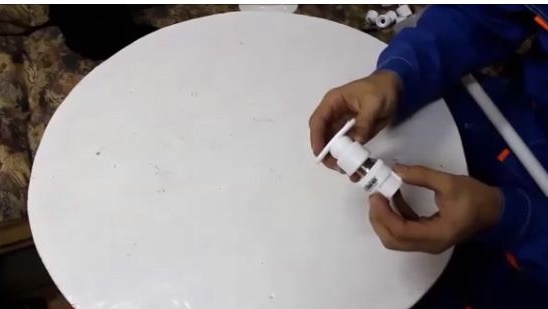
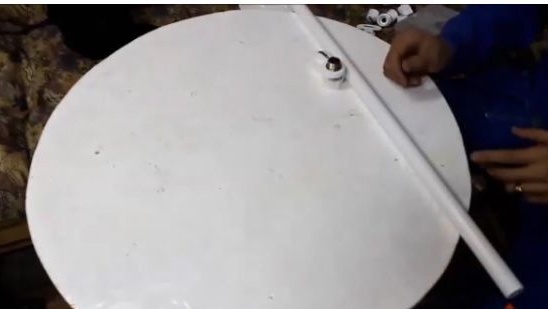
8- It's time to make a quality connection with a plumbing soldering iron or iron. We expose the appropriate-sized sleeves, press them with a hex wrench and set the iron to warm up.
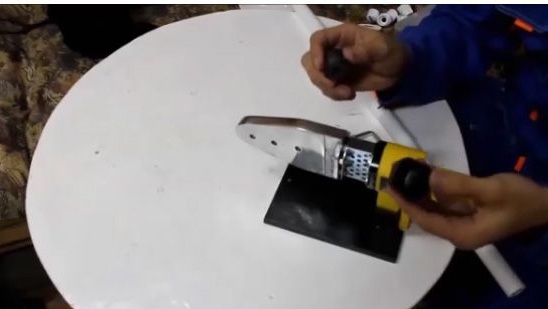
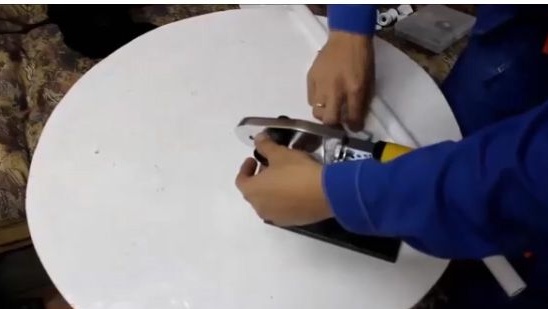
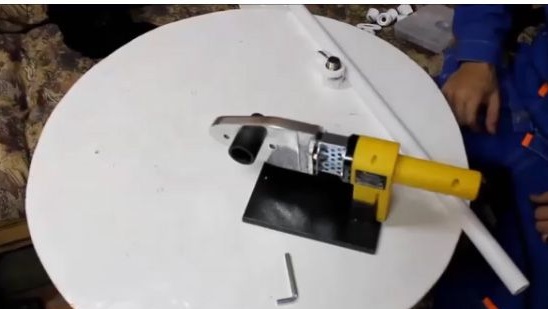
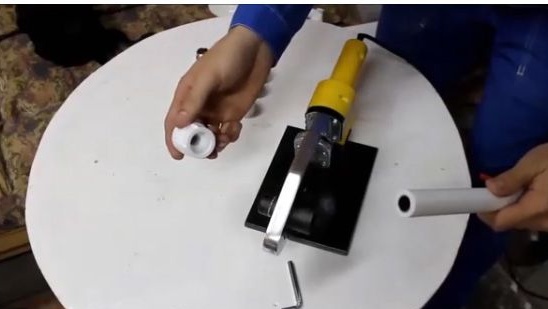
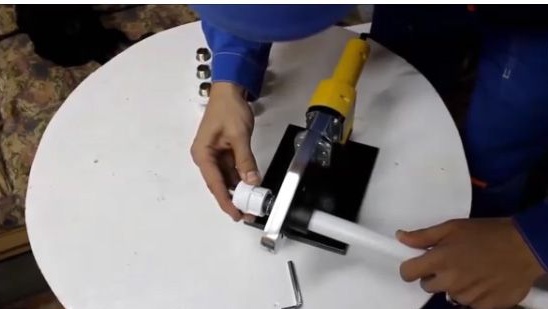
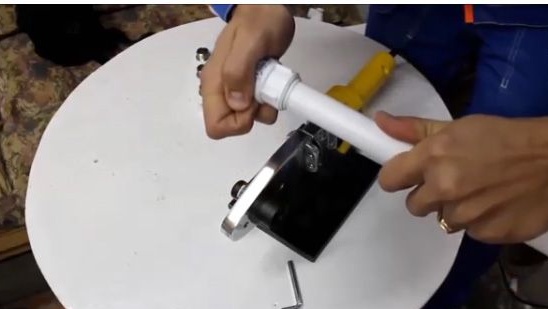
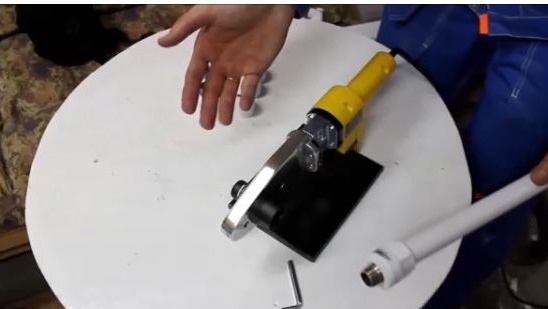
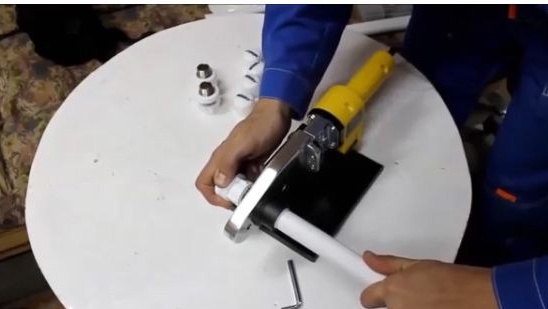
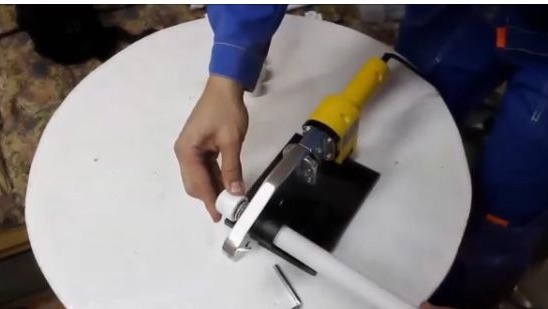
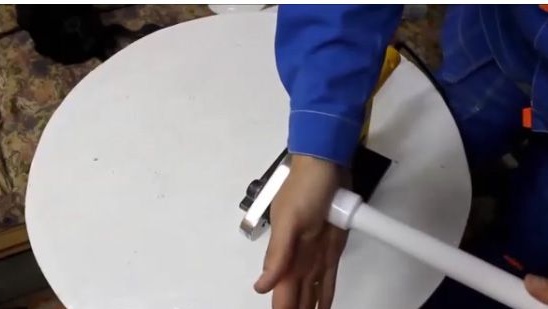
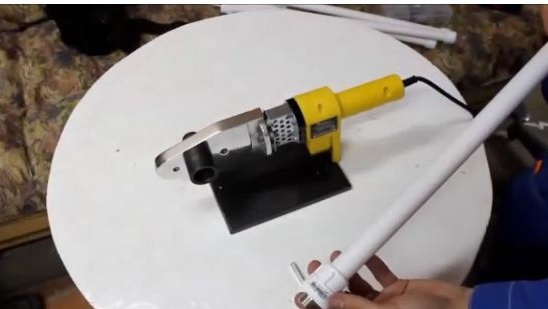
9- Next, insert the pipe and fitting into the opposite sleeves, heat them and tightly compress the heated ends, aligning the connection. On each leg of four, a plug and a male thread coupling must be located. Tsargi are intended for fastening the legs together. This design provides for their placement at any level of the legs. They are also soldered with an iron, and represent a piece of pipe with two plugs into which clips are screwed (photo). The author made only two of them, although the number may be large.
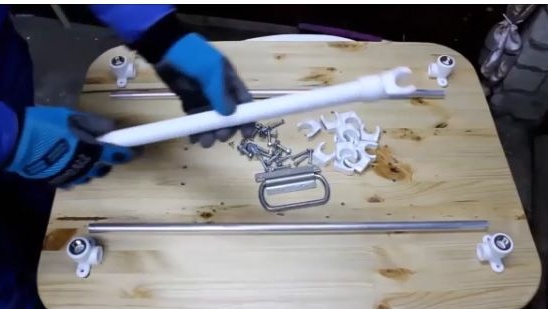
10- The tabletop has dried, now you need to install the corners for the legs. We fix them to the bolts, affixing with washers. The connection can be tightened using a ratchet wrench with the appropriate nozzle. To fasten them together, we put the remains of the furniture pipe between them, tightly holding them between the fixed corners.
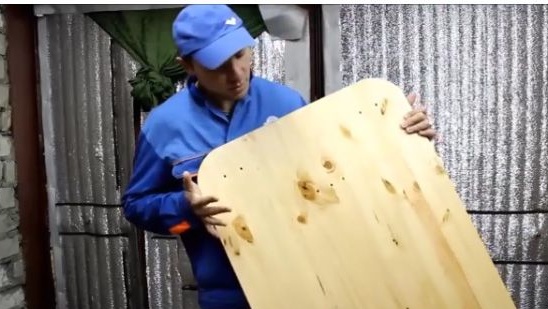
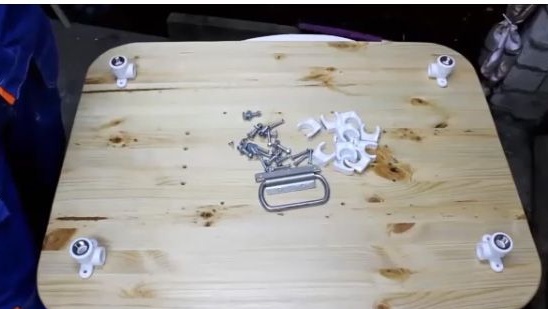
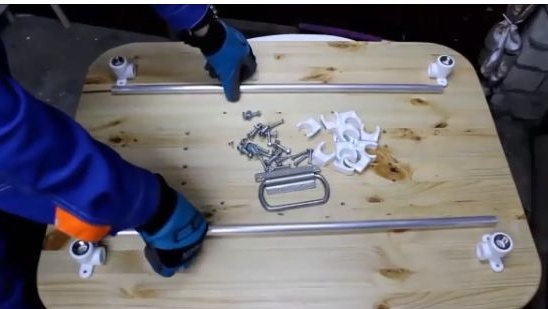

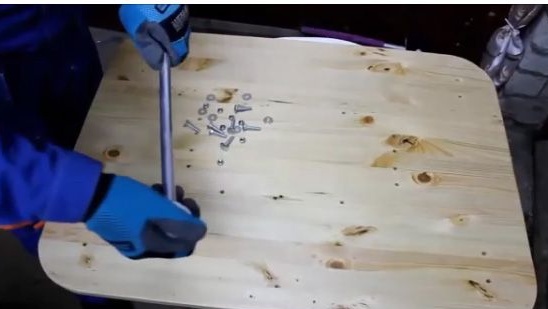
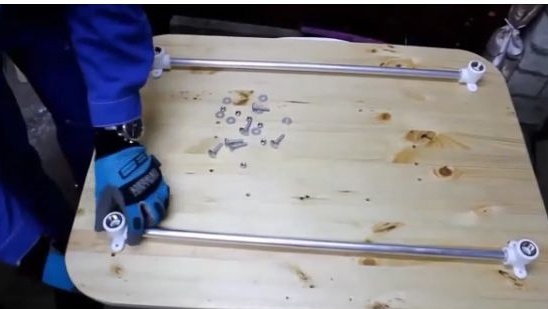

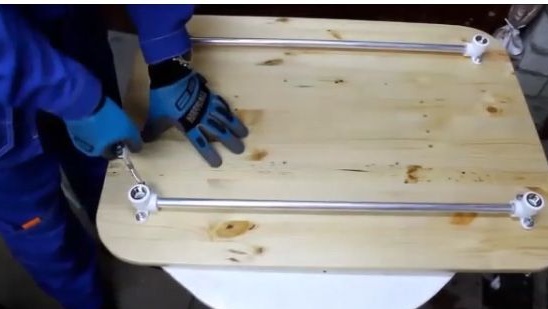
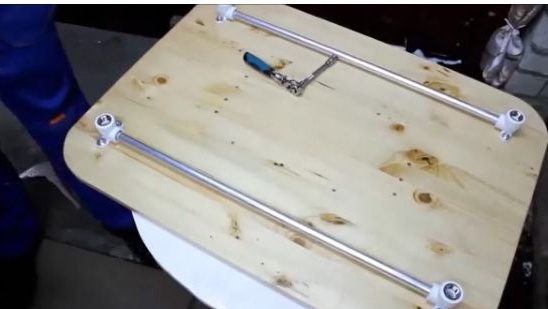
11- Also do not forget about the handle for carrying and more convenient use of the table. With one of the longitudinal sides we fasten the handle for carrying our table. This can be done on self-tapping screws.
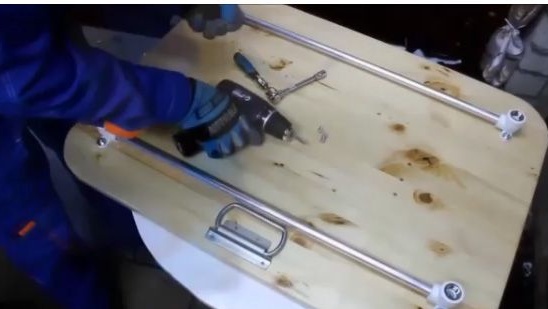
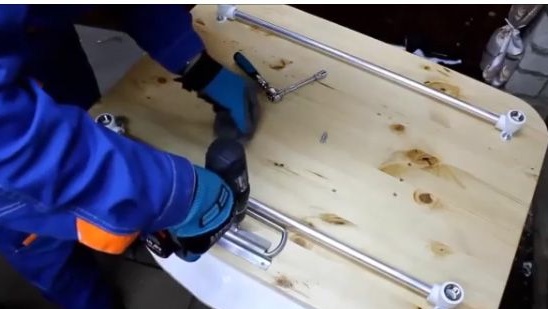
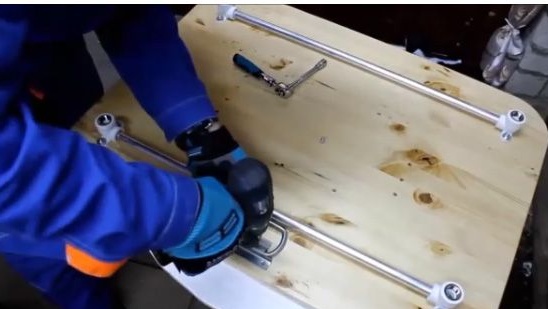
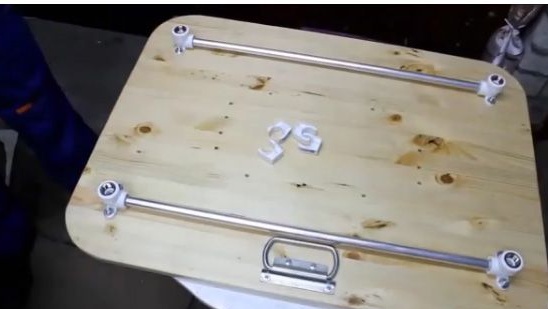
12- Next, fasten the clips. Clips for storing legs are also attracted to the bolts. To do this, they have provided mounting holes for the nut. On the side we place several additional clips for storing the tsar.
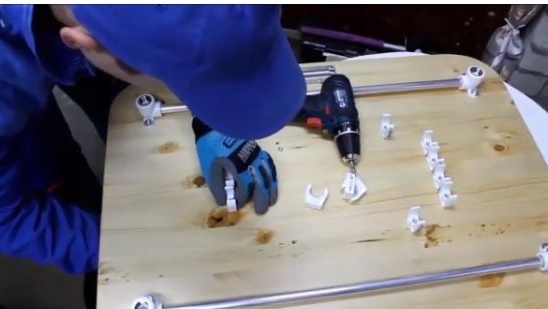
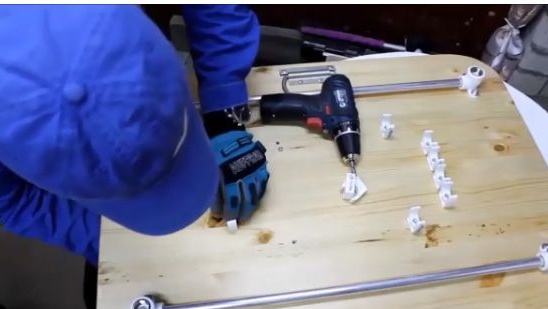
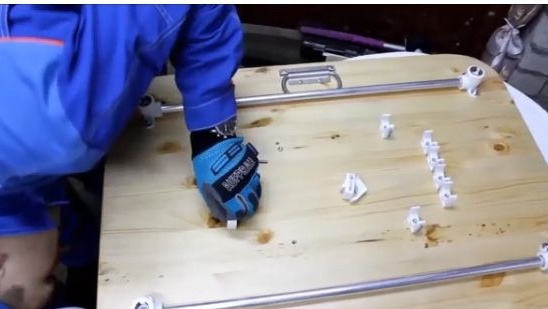
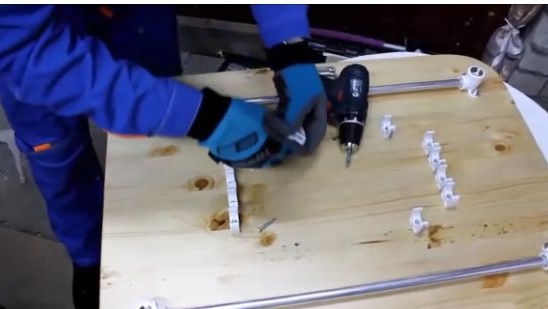
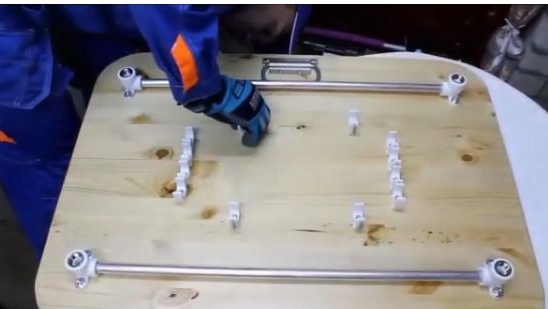
13- Insert the legs into place.
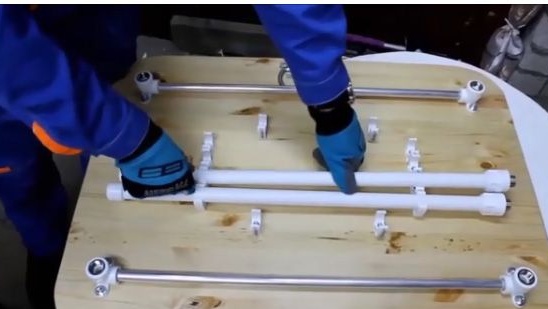
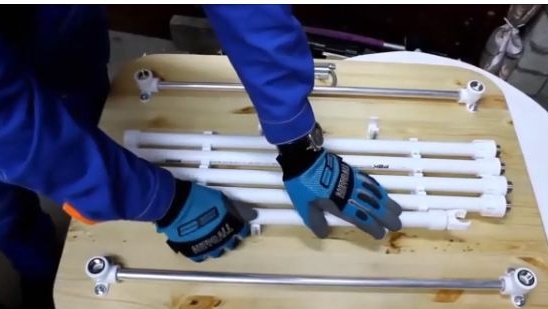
14- And the table is ready !!!
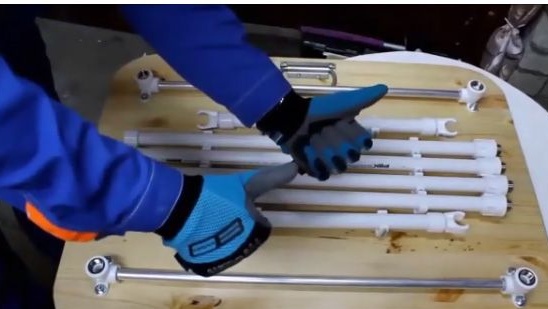
Conclusion:
Now we can try to lay out the table and test it. Of course, you need to lay it out a little longer than the factory analogues, but this table will definitely be accurate, much stronger and more reliable than the factory analogues.
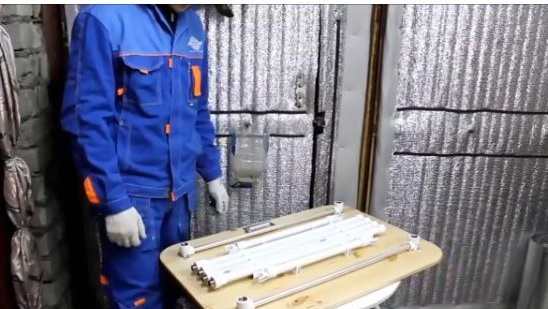
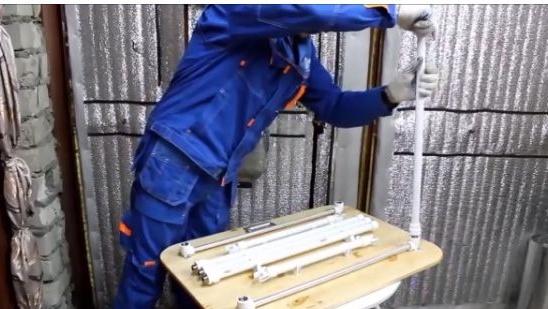
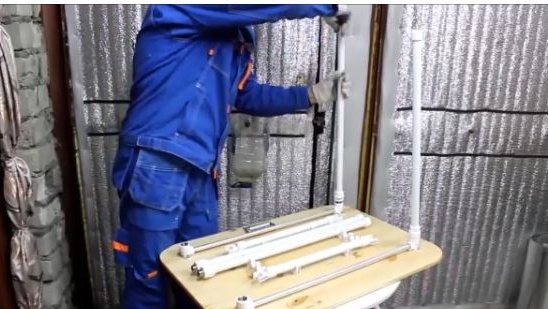
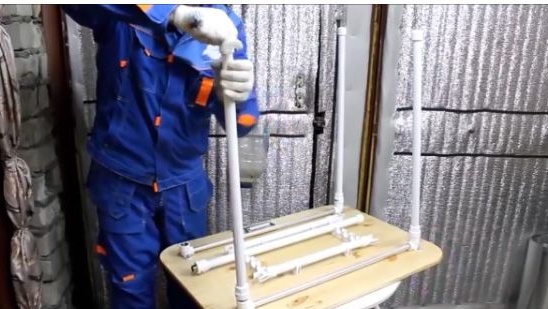
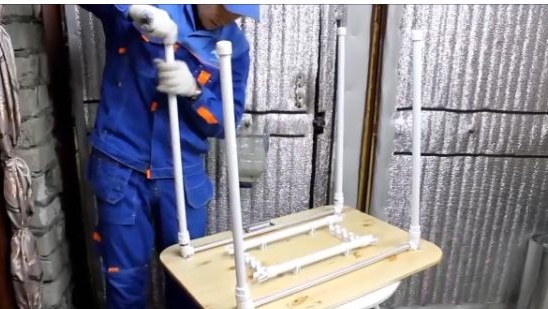


As a result, we got just a wonderful and reliable table for any kind of work. This table can fit even in a very small garage, and it will also be very convenient to carry it with you in the car.
Well, that's all thank you for your attention, I hope this article was useful for you, and also you have a wonderful opportunity to see a video assembly of this homemade product.
